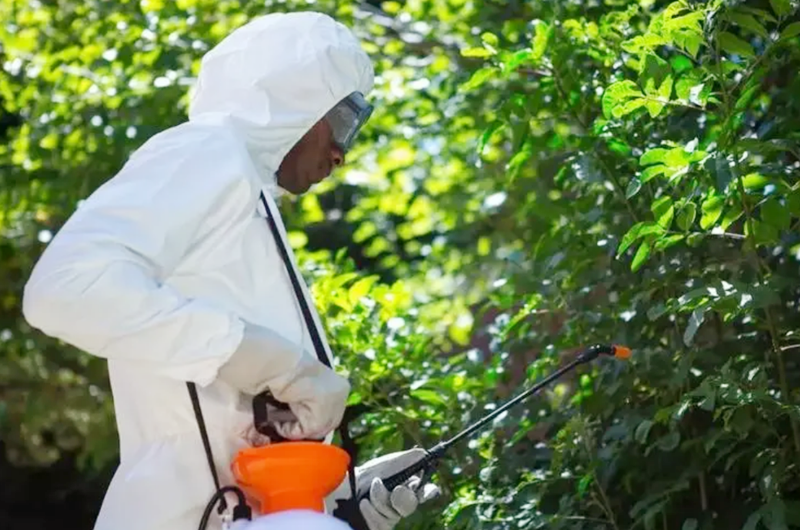What’s the Biopesticide?
As consumers become more conscious of food quality and environmental impact, the demand for safer and more sustainable agricultural practices is rising. The use of biopesticides grows due to advantages in terms of safety, more sustainable, environmentally friendly, and effective pest management solutions. Many governments are promoting the use of biopesticides through regulations and incentives that encourage sustainable farming practices. What’s biopesticide and why are they popular in recent years?
A biopesticide is a type of pesticide derived from natural sources and can be used to regulate growth, and control pests, and has no direct toxicity to the control target. Compared with synthetic chemical pesticides, which are often made from chemicals that can be harmful to the environment and human health, biopesticides are typically made from living organisms or naturally occurring substances and have been widely used in agriculture, forestry, and other fields. The benefits of biopesticide include:
- Environmentally friendly
- Lower toxicity to humans and safety for workers
- Fewer negative impacts on non-target organisms( beneficial insects and wildlife)
- Sustainable Agriculture
- Break down more quickly and reduce residue levels.
There are several different types of biopesticides, according to their source, They can be microbial biopesticides, plant-Incorporated protectants (PIPs) and biochemical biopesticides: microbial biopesticides are based on microorganisms like bacteria, fungi, viruses, or protozoa. They work by infecting or parasitizing pests and are often used to control insect pests or plant diseases. PIPs are biopesticides produced by genetically modifying crops to express proteins from other organisms that have pesticidal properties. For example, some genetically modified crops produce a protein from the bacterium Bacillus thuringiensis (Bt) to protect against insect pests. biochemical biopesticides are naturally occurring substances that are mainly extracted from plants.
Examples include neem oil, which is derived from the neem tree and used to control a variety of pests, and diatomaceous earth, which is made from the fossilized remains of tiny aquatic organisms and can be used to control insects. Azadirachin can affect and interfere with the insect’s feeding smell or taste, causing the insect to refuse or stop eating, as well as affect the hormone levels of the insect, causing the insect to be stunted or stop developing. The effect of plant pesticides on controlling nematodes has also been reported. Hassan et al. found that 120 mg/L water extract of neem had obvious inhibitory effect on soybean root-node nematodes. The inhibition rate of larvae hatching was 75%, the mortality rate of larvae was 100%, the reduction rate of female adult worms was 83%, and the rate of cysts was 80%.
Needitin, pyrethrin, matrine, escarpatin and cineulin all have bactericidal properties. The antibacterial active substances in Neem can inhibit the development and propagation of invasive pathogens to prevent and control diseases, and induce the production of disease resistant enzymes in plants when they are infected by pathogens, so as to enhance the disease resistance of plants. Camphor tree, the main source of eudesin, has a strong inhibitory effect on plant fungi such as rice blast fungus, wheat fusarium, corn sheath blight, pinotrichum and anthrax bacilli.
Studies have found that many plants with insecticidal activity also have certain effects of killing nematodes, bactericides and weeds, including neem, Solanaceae, legumes, Compositae, and labiaceae. For example, Azadirachtin has strong inhibitory activity on the germination of barnyard grass and Monochoria herb. Adding the pesticide synergist of Azadirachtin to herbicides can significantly improve the control effect of herbicides on weeds, and the amount of herbicides can be reduced by more than 50%. It can even be used as a soil fertilizing agent and amendment. To enhance plant and soil resistance to pests and diseases. According to its functions, biopesticides can be:
| Type | Ingredients | Toxicity |
| Insecticide | Matrine | Low toxic |
| Veratrine | Low toxic | |
| Nicotine | Medium toxic | |
| Nicotinic acid | Low toxic | |
| Sanguinarine | Low toxic | |
| Chenopodine | Low toxic | |
| Stemonine | Low toxic | |
| Capsaicine | Low toxic | |
| Scopolamine | Low toxic | |
| Strychnine | Highly toxic | |
| Aconitine | Highly toxic | |
| Picrocetin | Low toxic | |
| Rotenone | Medium toxic | |
| Pimpinellin | Low toxic | |
| Neolatoxin A | Low toxic | |
| Toosendanin | Low toxic | |
| Azadirachin | Low toxic | |
| Eschnocetin | Low toxic | |
| Tea saponin | Low toxic | |
| Isocaroside | Low toxic | |
| Eucalyptus oil | Low toxic | |
| Rhodojaponin III | Low toxic | |
| Star anise oil | Low toxic |
| Type | Ingredients | Toxicity |
| Bactericide | Matrine | Low toxic |
| Berberine | Low toxic | |
| eEugenol | Low toxic | |
| Carvacrol | Low toxic | |
| Catechin | Low toxic | |
| Allicin | Low toxic | |
| Ethylicin | Low toxic | |
| Physcion | Low toxic | |
| Baicalin | Low toxic |
| Type | Ingredients | Toxicity |
| Acaricide/Herbicide | Veratrine | Low toxic |
| Azadirachtin | Low toxic |
The advantages of biopesticides in terms of safety, environmental impact, and pest management make them an important component of modern agriculture. Ongoing research and development efforts in biotechnology are leading to the discovery of new biopesticides and improved formulations, which enhance the efficacy and versatility of biopesticides. They are gaining popularity not only in developed countries but also in developing regions where sustainable agriculture and reduced chemical use are important goals.

